VTC - Satellite Communications Center (Vladivostok)
I accidentally found some interesting material in the archive and I think it’s worth telling you about one excursion to the object about the existence of which you probably don’t even suspect. Today I will tell you about the Vostoktelekom Satellite Communications Center, which is located in the forest zone in the Varyag region. Their antennas are perfectly visible from the neighboring hills
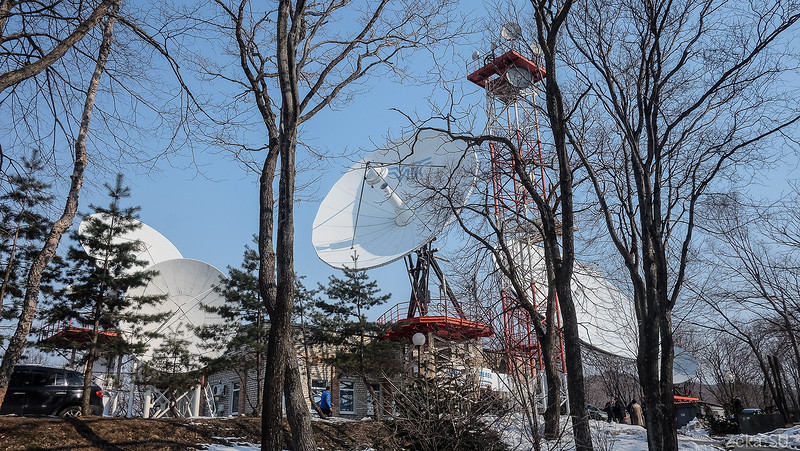
To begin with the answer to a simple question. But why, actually, at present, the center of satellite communications Vladivostok? After all, fiber optic networks stretched their tentacles almost everywhere.
If we recall that just a year ago Kamchatka, 2 years ago Magadan, and 10 years ago Sakhalin acquired an optical cable, then you begin to understand that satellite communications in our Far East are still very relevant.
')
At least 2 regions are completely located on satellite communication lines (Chukotka and Kuryles) + hundreds of settlements are scattered throughout our Far East. In many of them there are no roads, but communication is already needed without it is no longer possible.
So for the organization of communication with these regions need satellite communications. In such satellite communication centers, the signal is lifted to the satellite, and the reception of the signal in the field can already be performed both by a similar station, for example for the entire city, and individually, if you install a dish for receiving satellite Internet.
2. Here, for example, on the hill there is a point of contact in the village of Malokurilsky Island of Shikotan
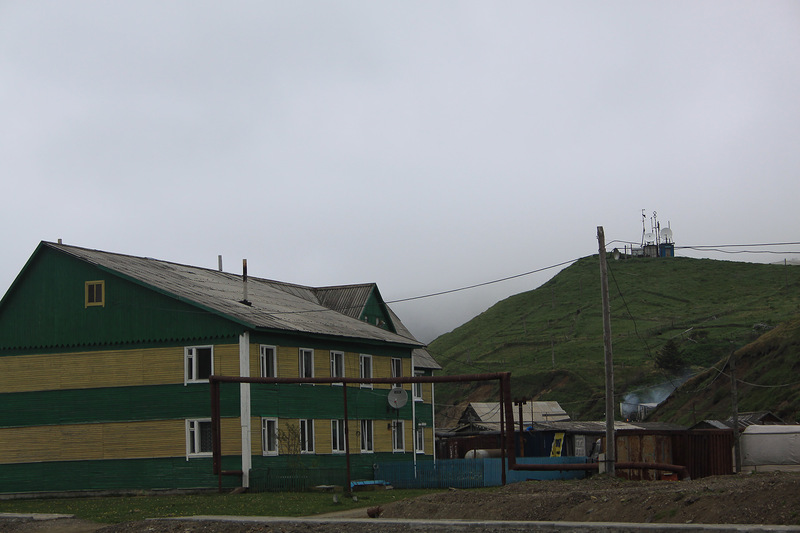
These antennas provide all residents of the village with Internet, cellular and wired communication.
3. But the communication center in Yuzhno-Kurilsk
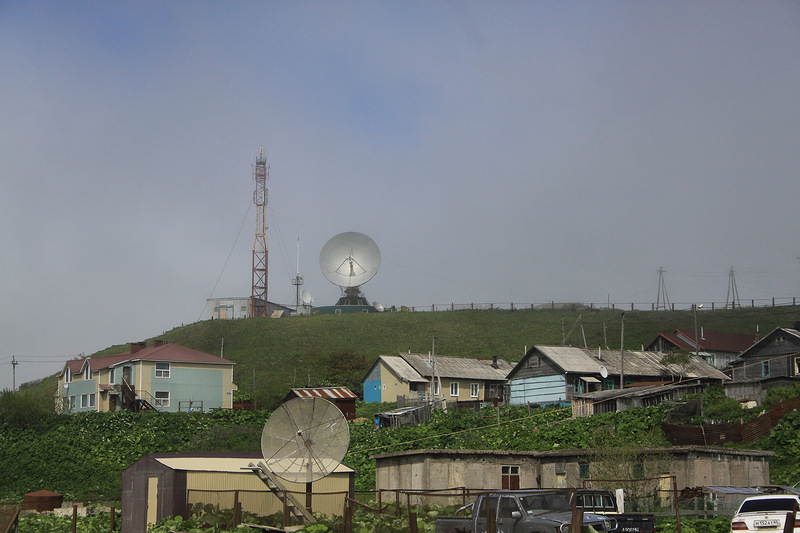
There is a huge antenna former communication station Orbit.
If you still remember, we used to have one television channel in the country - the central one, and now, in order to deliver its signal to all consumers, they were built in remote regions of Orbit station. They, in contrast to the modern satellite dish were mobile and constantly rotated watching the satellite in a highly elliptical orbit.
Then they refused from these difficulties, the satellites began to hang slightly higher in geostationary orbit and the need for a constant rotation of the antenna was gone. But the stations still stand in some places, and at their base are deployed communication centers of these remote places with the whole world.
4. This is a photo from the “extinct” village of Grosevich in the Khabarovsk Territory. 5 people live in it, 250 km by civilization on the water

Absolutely working payphone. Depends only on the vagaries of the weather.
5. And this is in another extinct village, Nelma Khabarvosky edge
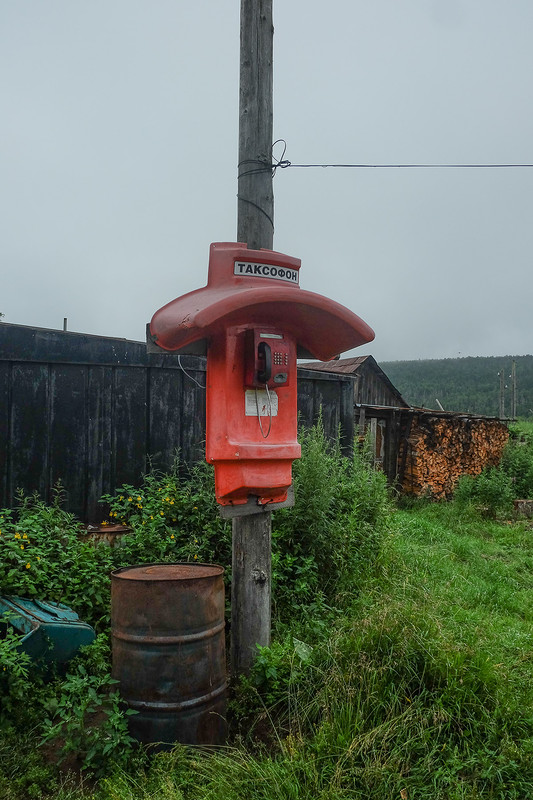
6. Also a plate. From them to civilization 300 km. People live, too, 5 people. I called home, cool
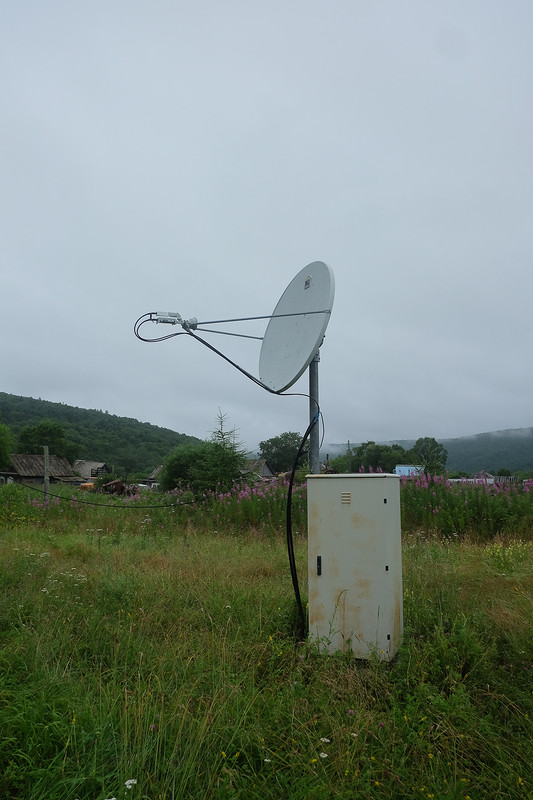
7. Another communication center. The village of Samarga, Terneisky district of the Primorsky Territory. Cellular communication is no more, operators have refused. They say only 200 inhabitants. Only wired phones in the huts and the rise of the signal up through this plate
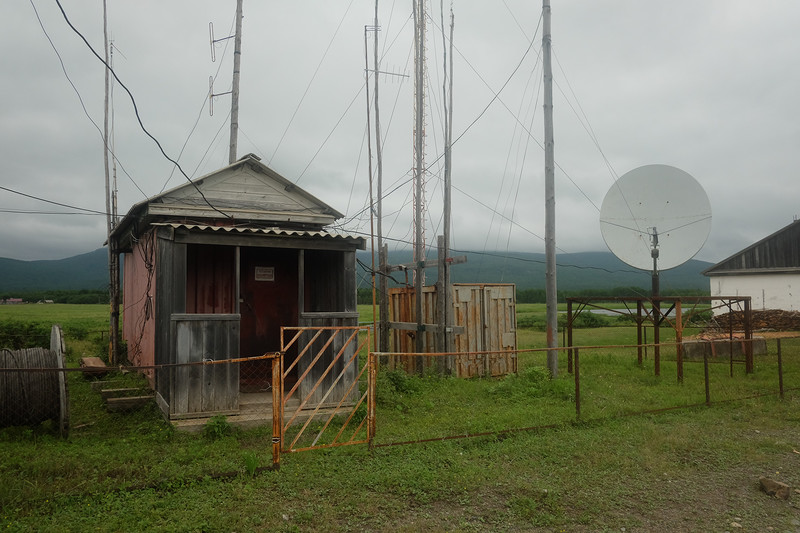
So, what you see, people still need satellite communications.
Well, it was the lyrics, and now there will be slides.
8. The territory of the communications center is naturally closed from outsiders by a fence and inaccessibility, but alas, a road has recently been laid nearby, so that the inaccessibility is over

9. Naturally exhibited around the clock reliable protection
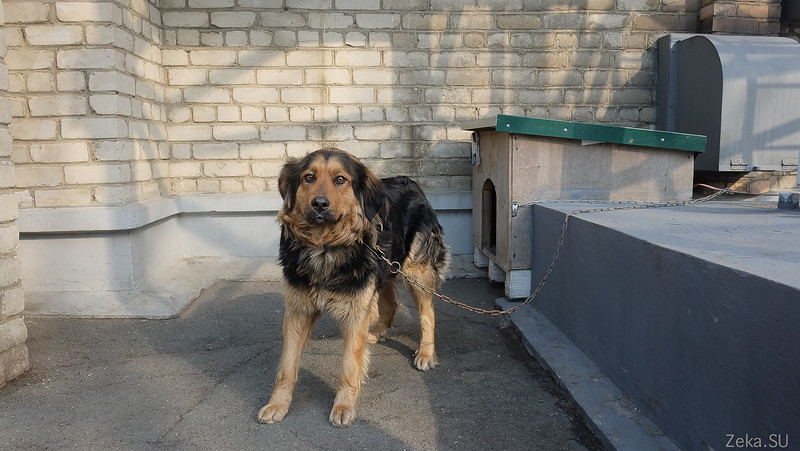
10. Main building of the center
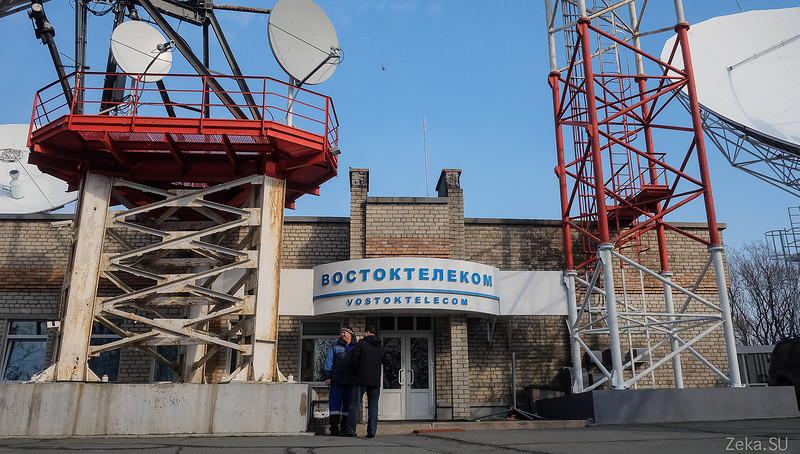
11. General view
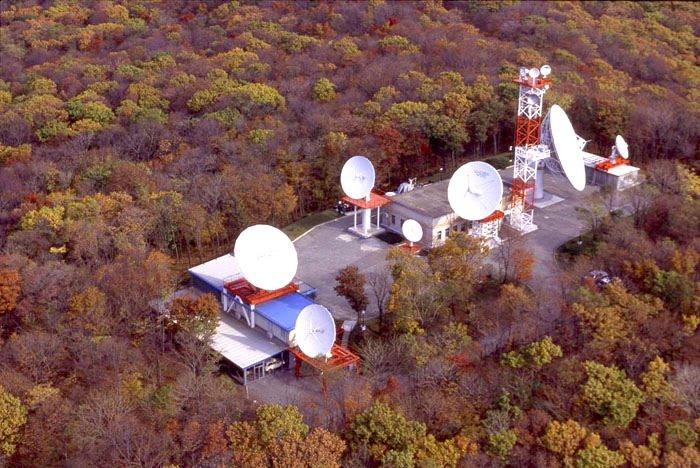
12. The largest plate of 16 meters available at the station.

13. Please note that her signal receiver is not in front of the dish but on the stand in the middle. The signal is twice reflected once from a large mirror, and the second time from a small one mounted on suspensions.
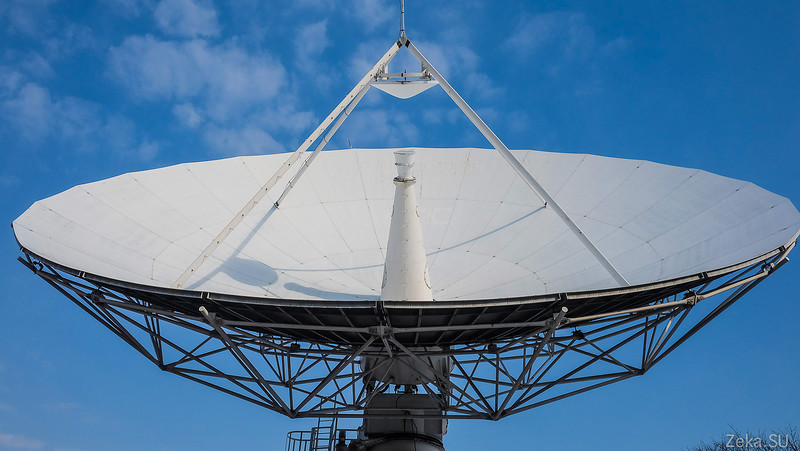
14. Other plates
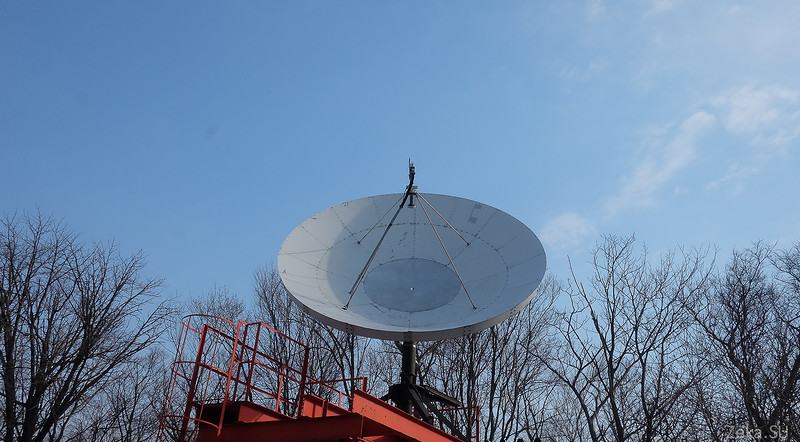
15.

sixteen.
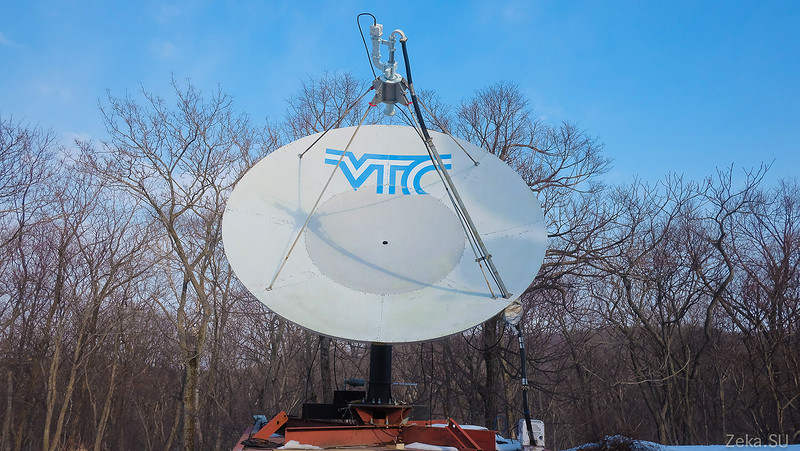
Previously, these plates provided communication not only within our country, but also communication channels to Japan. But alas, in the age of universal centralization of the Internet to Japan goes not directly but through Moscow. And such lines of communication are available only to corporate clients. For example, often used by television reporters for ferrying video.
17. The smallest antenna in the antenna farm

18.

The main directions of communication are the satellites Express-AM5 (140 ° E), Yamal-401 (90 ° E), Intelsat IS-19 166 ° E and JCSAT (Japan).
Now let's go inside.
19. We checked that the guards were easily bribed with simple caress and missed everyone without checking the documents.

20. At the station is a round-the-clock duty of several operators.
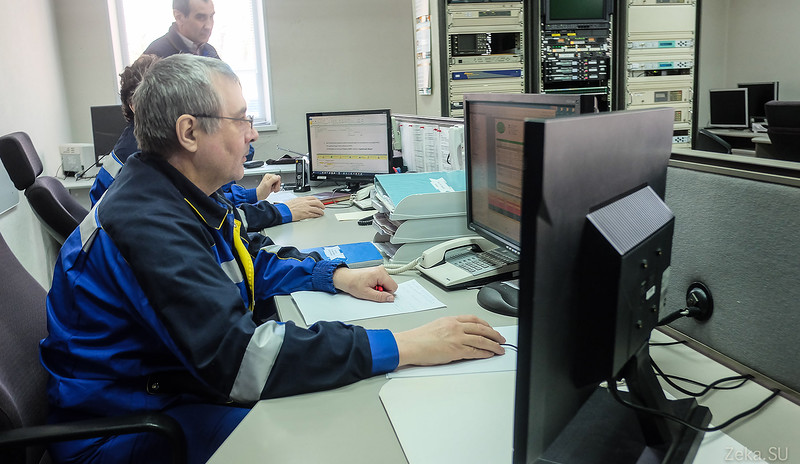
21.
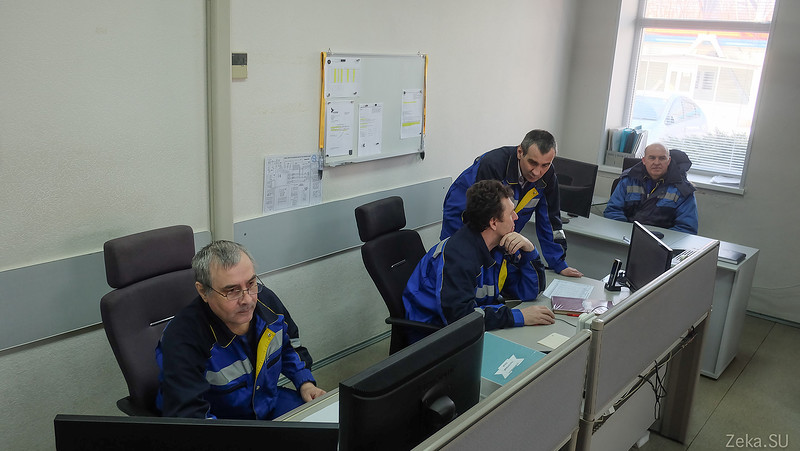
22. Accidentally peeked into the monitoring system of the uninterruptible power supply.
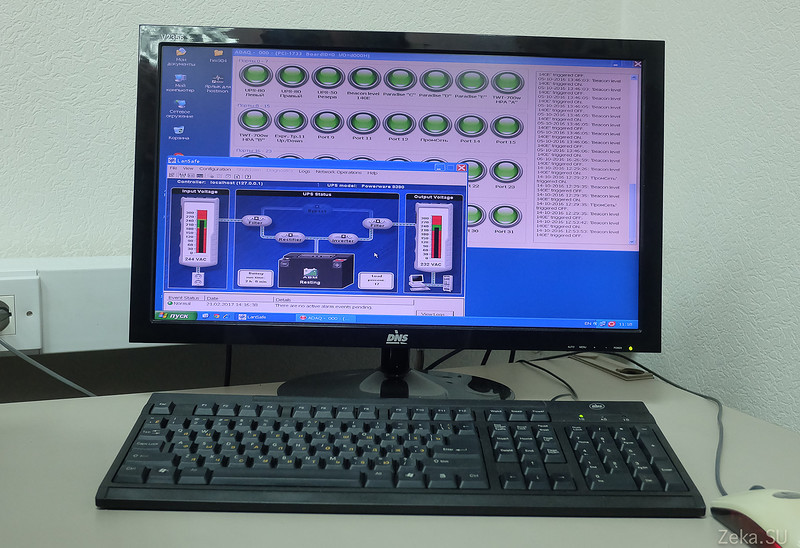
23. Working with other time zones requires such a thing, from personal experience, I found out long ago that this is unnecessary. You quickly get used to it and you know how much time it is in other regions.

24. Well-known blogger Eugene disapprovingly looks into the computer guard and video surveillance
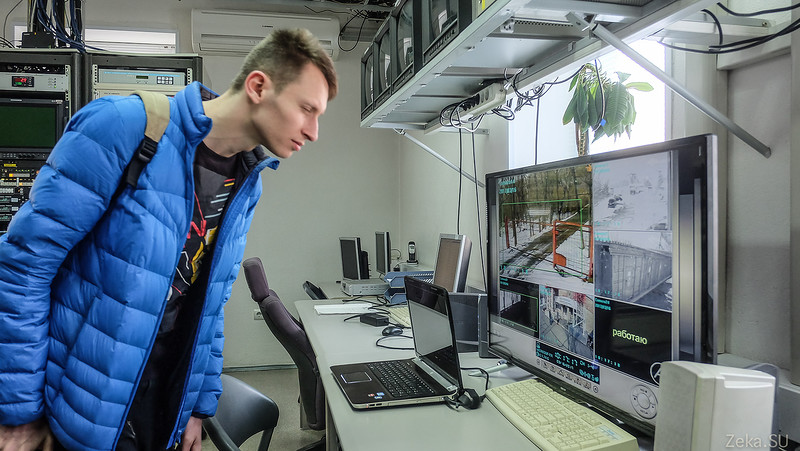
25. Rack with equipment.

Now there will be a few slides from the “server”, alas, I am not very familiar with satellite communications technologies, but I cannot comment on what I saw.
26. Antenna controllers indicate which satellite is being watched.

27. Signal analyzer, built in immediately, so as not to carry with you all the time
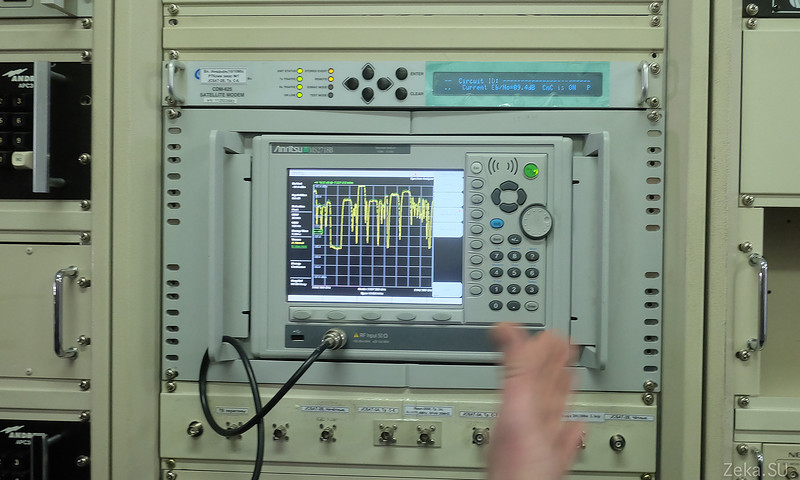
28. Wave guides
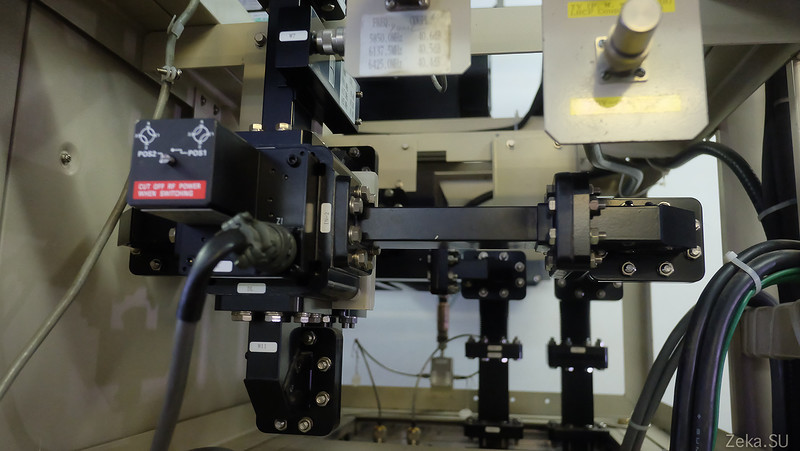
29. For those who are far away, this type of plumbing for high-frequency signals fed to the transmitter plates.
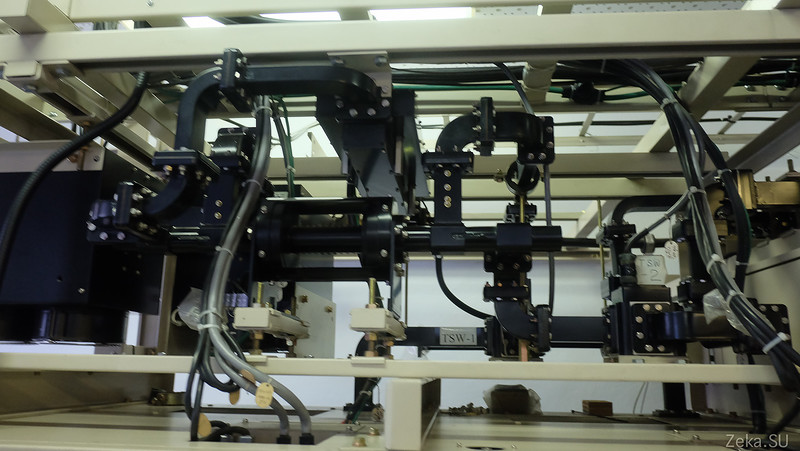
Just before, the equipment was placed in the room and the signal to the antenna was transmitted through the waveguide, now the equipment has decreased and it became possible to place the transmitter directly on the plate
thirty.
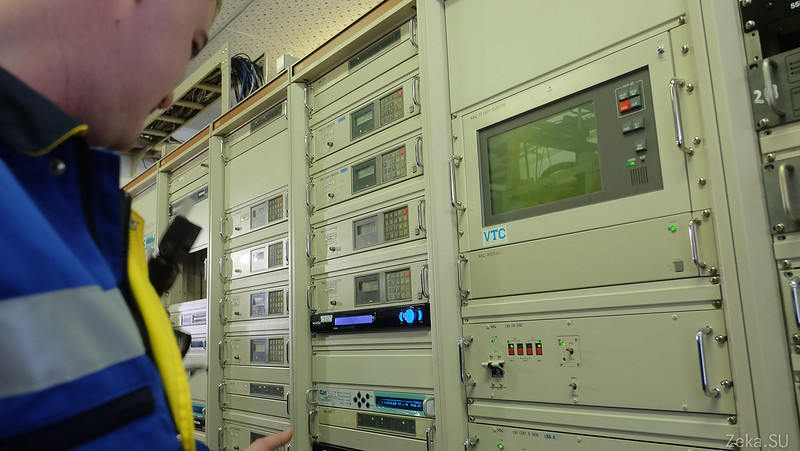
31.
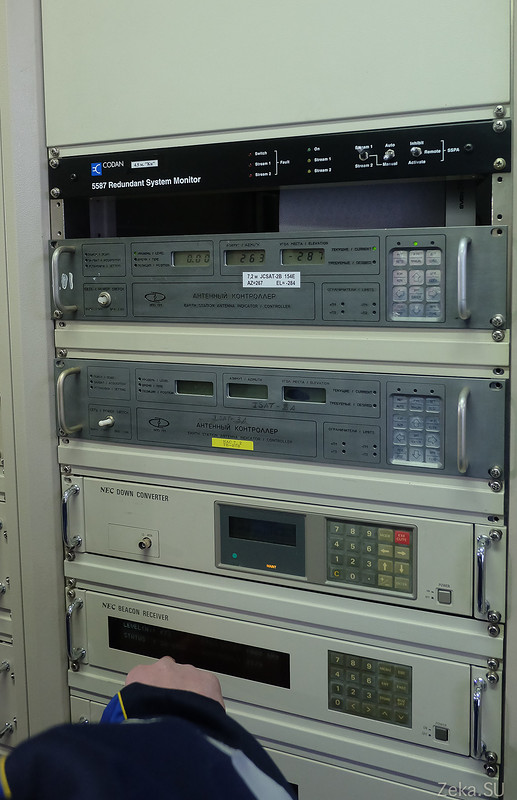
32. NEC equipment for receiving satellite signal
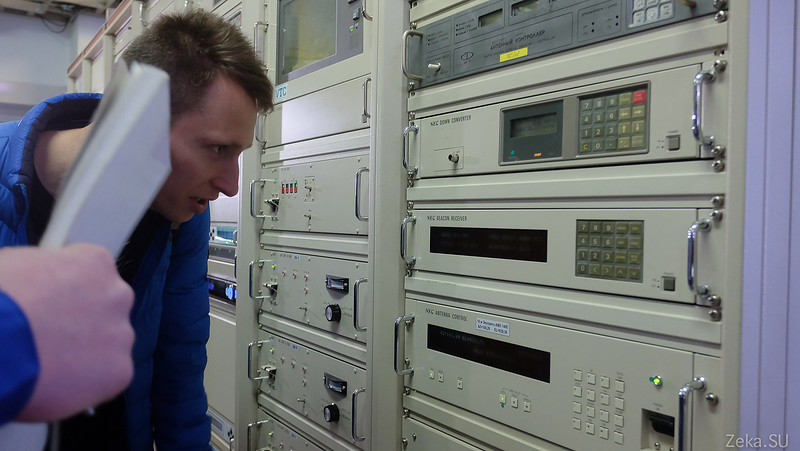
33. And here is our, apparently outdated and not used
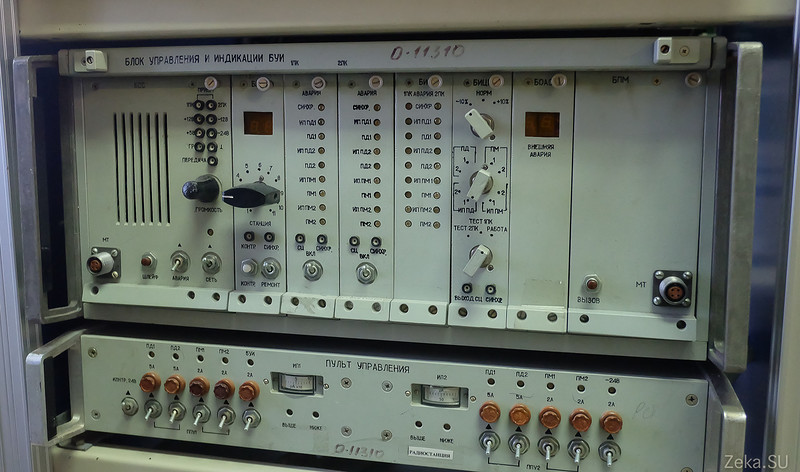
34. Amplifier
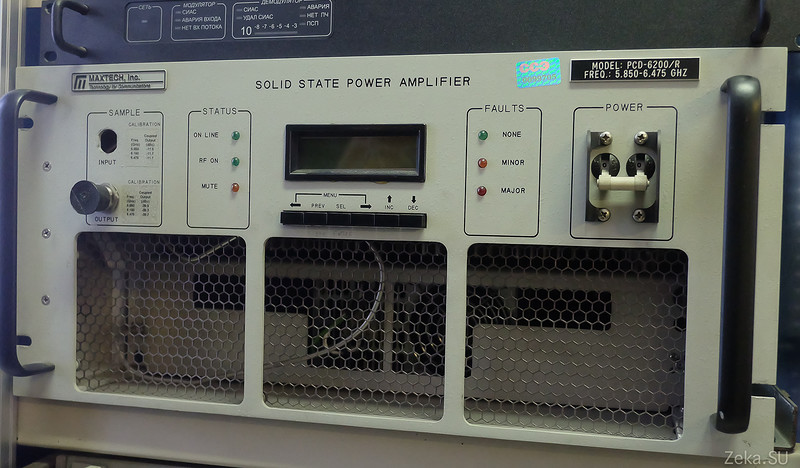
34. Transmitters on klystrons (such lamps) just to them and went waveguides for the signal. Now is the last century. But I saw the same at the NEC plant in Fukushima, alas, they were not allowed to take pictures even in the museum exhibition
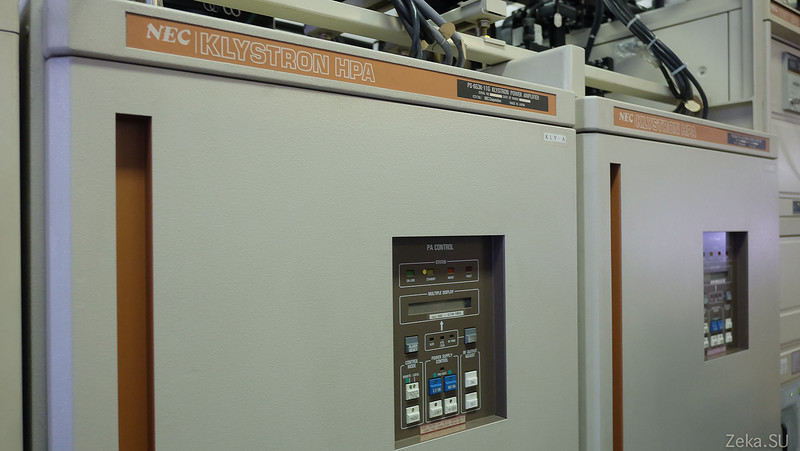
36. There are already more familiar things. Telecommunication equipment for transmitting received data to urban networks
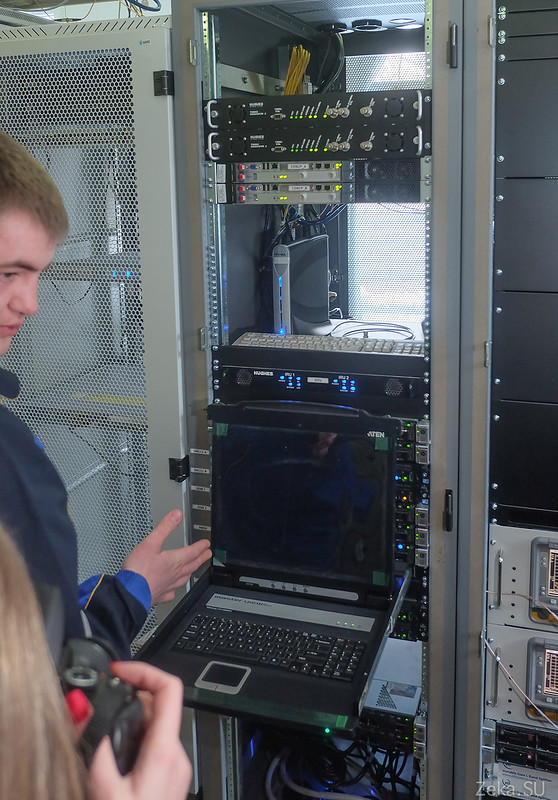
By the way, the station is connected to the city not only by wires, but also by a radio relay line. Everything must be duplicated, in case of failure
37.
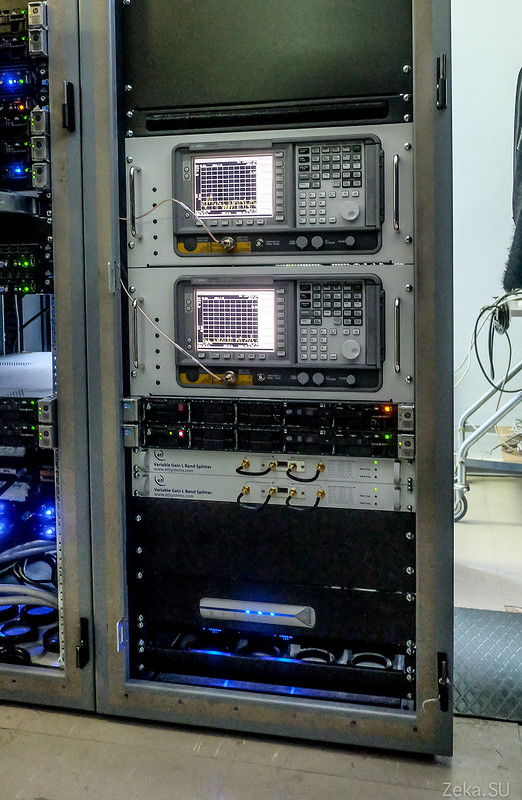
38. Switches multiplexers digital streams T1 / E1 (used to transfer telephone streams between providers)
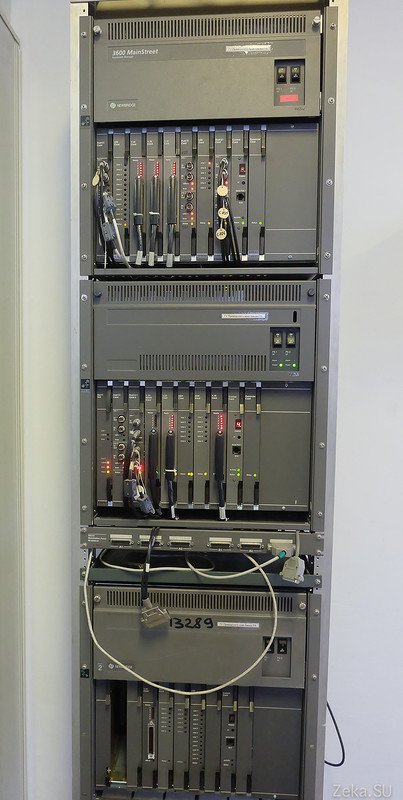
39. Satellite modems for the organization of dedicated channels to remote regions. Chukotka, Kamchatka, banks and government agencies, and of other large enterprises. At the other end is similar equipment.

40. Patch panel, connect signals from modems to dish controllers and transmitters
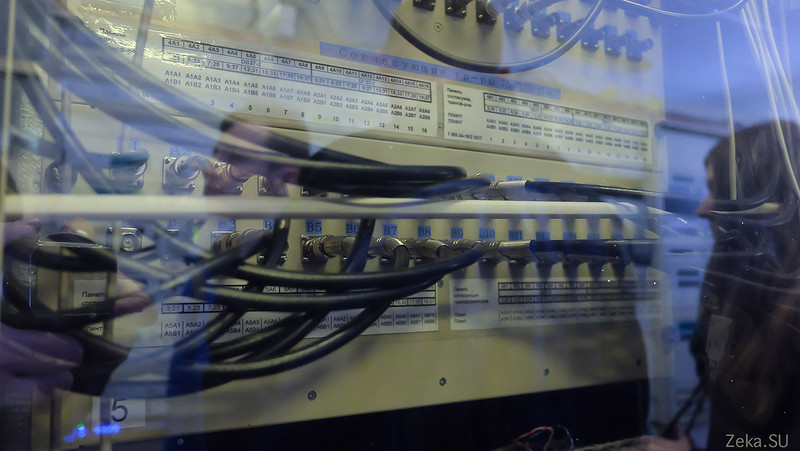
41. Okay, now let's look at another holy of holies, which ensures the continuity of the work of all equipment.
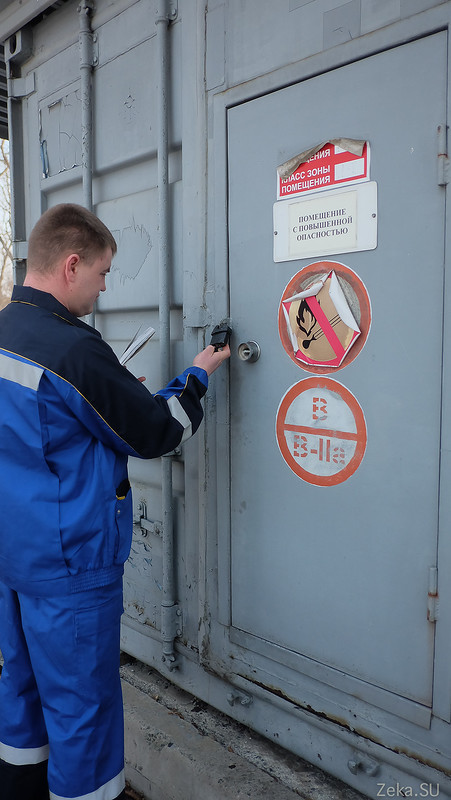
42. There lives a diesel generator,

43. it provides several days for the complex to operate from one gas station, then it will be necessary to call for a fuel truck to arrive.
Looks hearty, apparently works very rarely.
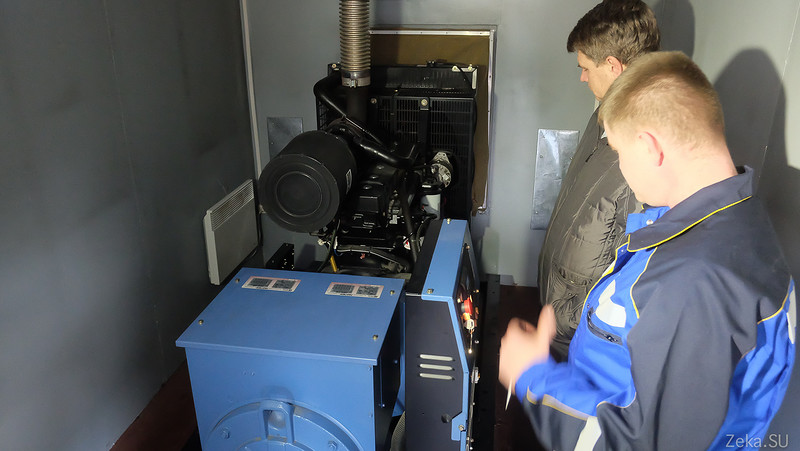
44. In the next room are batteries

45. There are not many of them here, their task is to hold the equipment for those minutes while the generator is running. Ie no more than half an hour usually enough a couple of minutes

46. And they also have a feeder for younger guests.
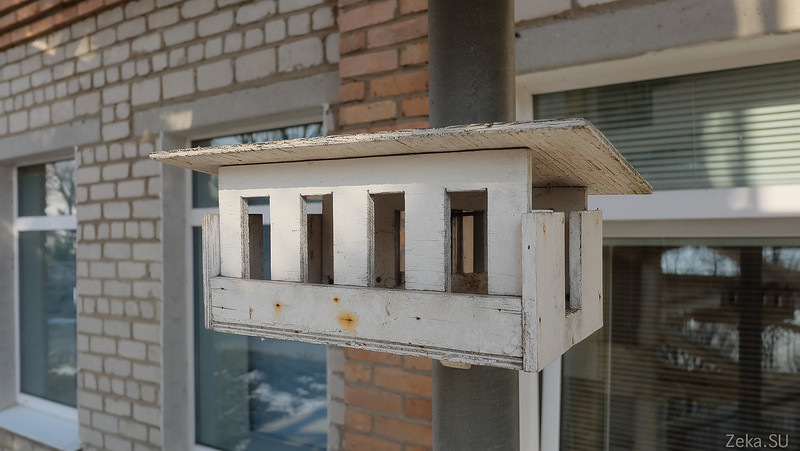
47. On the sim, perhaps, everything. Sorry, the stuff lay in a long box.

For the invitation, thanks to VostokTelecom and Rostelecom.

To begin with the answer to a simple question. But why, actually, at present, the center of satellite communications Vladivostok? After all, fiber optic networks stretched their tentacles almost everywhere.
If we recall that just a year ago Kamchatka, 2 years ago Magadan, and 10 years ago Sakhalin acquired an optical cable, then you begin to understand that satellite communications in our Far East are still very relevant.
')
At least 2 regions are completely located on satellite communication lines (Chukotka and Kuryles) + hundreds of settlements are scattered throughout our Far East. In many of them there are no roads, but communication is already needed without it is no longer possible.
So for the organization of communication with these regions need satellite communications. In such satellite communication centers, the signal is lifted to the satellite, and the reception of the signal in the field can already be performed both by a similar station, for example for the entire city, and individually, if you install a dish for receiving satellite Internet.
2. Here, for example, on the hill there is a point of contact in the village of Malokurilsky Island of Shikotan

These antennas provide all residents of the village with Internet, cellular and wired communication.
3. But the communication center in Yuzhno-Kurilsk

There is a huge antenna former communication station Orbit.
If you still remember, we used to have one television channel in the country - the central one, and now, in order to deliver its signal to all consumers, they were built in remote regions of Orbit station. They, in contrast to the modern satellite dish were mobile and constantly rotated watching the satellite in a highly elliptical orbit.
Then they refused from these difficulties, the satellites began to hang slightly higher in geostationary orbit and the need for a constant rotation of the antenna was gone. But the stations still stand in some places, and at their base are deployed communication centers of these remote places with the whole world.
4. This is a photo from the “extinct” village of Grosevich in the Khabarovsk Territory. 5 people live in it, 250 km by civilization on the water

Absolutely working payphone. Depends only on the vagaries of the weather.
5. And this is in another extinct village, Nelma Khabarvosky edge

6. Also a plate. From them to civilization 300 km. People live, too, 5 people. I called home, cool

7. Another communication center. The village of Samarga, Terneisky district of the Primorsky Territory. Cellular communication is no more, operators have refused. They say only 200 inhabitants. Only wired phones in the huts and the rise of the signal up through this plate

So, what you see, people still need satellite communications.
Well, it was the lyrics, and now there will be slides.
8. The territory of the communications center is naturally closed from outsiders by a fence and inaccessibility, but alas, a road has recently been laid nearby, so that the inaccessibility is over

9. Naturally exhibited around the clock reliable protection

10. Main building of the center

11. General view

12. The largest plate of 16 meters available at the station.

13. Please note that her signal receiver is not in front of the dish but on the stand in the middle. The signal is twice reflected once from a large mirror, and the second time from a small one mounted on suspensions.

14. Other plates

15.

sixteen.

Previously, these plates provided communication not only within our country, but also communication channels to Japan. But alas, in the age of universal centralization of the Internet to Japan goes not directly but through Moscow. And such lines of communication are available only to corporate clients. For example, often used by television reporters for ferrying video.
17. The smallest antenna in the antenna farm

18.

The main directions of communication are the satellites Express-AM5 (140 ° E), Yamal-401 (90 ° E), Intelsat IS-19 166 ° E and JCSAT (Japan).
Now let's go inside.
19. We checked that the guards were easily bribed with simple caress and missed everyone without checking the documents.

20. At the station is a round-the-clock duty of several operators.

21.

22. Accidentally peeked into the monitoring system of the uninterruptible power supply.

23. Working with other time zones requires such a thing, from personal experience, I found out long ago that this is unnecessary. You quickly get used to it and you know how much time it is in other regions.

24. Well-known blogger Eugene disapprovingly looks into the computer guard and video surveillance

25. Rack with equipment.

Now there will be a few slides from the “server”, alas, I am not very familiar with satellite communications technologies, but I cannot comment on what I saw.
26. Antenna controllers indicate which satellite is being watched.

27. Signal analyzer, built in immediately, so as not to carry with you all the time

28. Wave guides

29. For those who are far away, this type of plumbing for high-frequency signals fed to the transmitter plates.

Just before, the equipment was placed in the room and the signal to the antenna was transmitted through the waveguide, now the equipment has decreased and it became possible to place the transmitter directly on the plate
thirty.

31.

32. NEC equipment for receiving satellite signal

33. And here is our, apparently outdated and not used

34. Amplifier

34. Transmitters on klystrons (such lamps) just to them and went waveguides for the signal. Now is the last century. But I saw the same at the NEC plant in Fukushima, alas, they were not allowed to take pictures even in the museum exhibition

36. There are already more familiar things. Telecommunication equipment for transmitting received data to urban networks

By the way, the station is connected to the city not only by wires, but also by a radio relay line. Everything must be duplicated, in case of failure
37.

38. Switches multiplexers digital streams T1 / E1 (used to transfer telephone streams between providers)

39. Satellite modems for the organization of dedicated channels to remote regions. Chukotka, Kamchatka, banks and government agencies, and of other large enterprises. At the other end is similar equipment.

40. Patch panel, connect signals from modems to dish controllers and transmitters

41. Okay, now let's look at another holy of holies, which ensures the continuity of the work of all equipment.

42. There lives a diesel generator,

43. it provides several days for the complex to operate from one gas station, then it will be necessary to call for a fuel truck to arrive.
Looks hearty, apparently works very rarely.

44. In the next room are batteries

45. There are not many of them here, their task is to hold the equipment for those minutes while the generator is running. Ie no more than half an hour usually enough a couple of minutes

46. And they also have a feeder for younger guests.

47. On the sim, perhaps, everything. Sorry, the stuff lay in a long box.

For the invitation, thanks to VostokTelecom and Rostelecom.
Source: https://habr.com/ru/post/411137/
All Articles